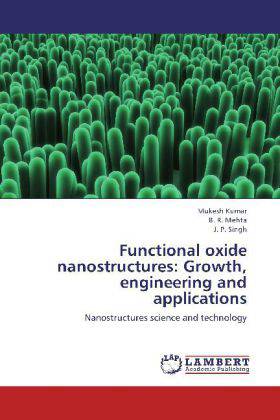
- Afhalen na 1 uur in een winkel met voorraad
- Gratis thuislevering in België vanaf € 30
- Ruim aanbod met 7 miljoen producten
- Afhalen na 1 uur in een winkel met voorraad
- Gratis thuislevering in België vanaf € 30
- Ruim aanbod met 7 miljoen producten
Zoeken
Functional oxide nanostructures: Growth, engineering and applications
Nanostructures science and technology
Mukesh Kumar, B. R. Mehta, J. P. Singh
Paperback | Engels
€ 77,95
+ 155 punten
Omschrijving
Transparent conducting oxides (TCO's) have drawn great attention owing to their high electrical conductivity (10,000 S/cm) and high transparency (80-90%) in the visible region. This combination of properties makes them suitable for a number of applications such as solar cells, LCD display, OPV devices and even transparent electronics. The TCO nanostructures even showed better transparent contact than TCO thin film. High surface-to-volume ratio of nanostructures have demonstrated high sensitivity towards various target gases like NH3, CO, H2 and H2S and for NO2, which is one of the most dangerous air pollutants that causes acid rain and holes in ozone layer. To realize these applications, a basic understanding of the growth mechanism of nanostructures is a key requirement. Here, the main focus is given for tunable growth of indium oxide nanostructures and their applications. The indium metal filled indium oxide nanotube based nanorocket and indium mass transport in indium oxide nanotubes is demonstrated with the help of high-resolution transmission electron microscopy.
Specificaties
Betrokkenen
- Auteur(s):
- Uitgeverij:
Inhoud
- Aantal bladzijden:
- 236
- Taal:
- Engels
Eigenschappen
- Productcode (EAN):
- 9783846532171
- Verschijningsdatum:
- 25/07/2012
- Uitvoering:
- Paperback
- Afmetingen:
- 152 mm x 220 mm
- Gewicht:
- 349 g

Alleen bij Standaard Boekhandel
+ 155 punten op je klantenkaart van Standaard Boekhandel
Beoordelingen
We publiceren alleen reviews die voldoen aan de voorwaarden voor reviews. Bekijk onze voorwaarden voor reviews.











